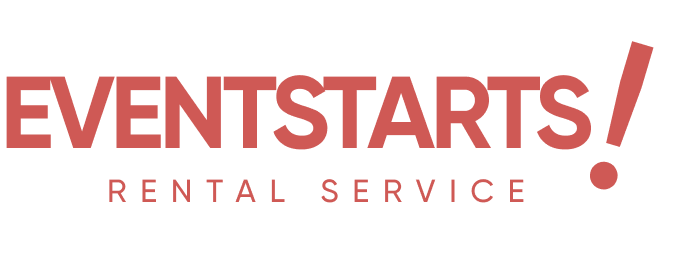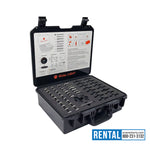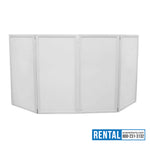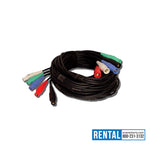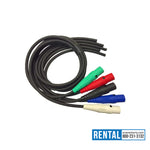You have no items in your shopping cart.
When planning any event—be it a corporate conference, wedding, concert, or large outdoor gathering—one of the most crucial yet often overlooked aspects is power. The right Event Power Equipment not only keeps everything running smoothly but also ensures the safety of guests, staff, and performers. Power failures or unsafe setups can quickly turn an exciting event into a logistical nightmare.
In this comprehensive guide, we'll walk through the best practices for using Event Power Equipment safely and effectively. From initial planning to post-event breakdown, these safety protocols and operational strategies will help organizers mitigate risks, avoid downtime, and deliver a seamless experience.
Why Power Planning Matters for Events
Before diving into technical details, it’s important to understand why power matters. Today’s events are driven by high-tech audio-visual systems, LED screens, advanced lighting rigs, food trucks, mobile ticketing systems, and more—all of which require reliable power.
A single overloaded circuit or faulty connection can cause:
-
Delays in the event schedule
-
Damage to expensive gear
-
Safety hazards such as electrical shocks or fire
-
Lost revenue and brand damage
Safe use of Event Power Equipment means more than plugging in a few extension cords. It requires proper planning, load balancing, compliant hardware, and trained technicians to manage the setup.
Types of Event Power Equipment
Here’s a breakdown of essential power equipment commonly used in events:
1. Generators
These are the backbone of outdoor events or venues without direct access to electrical infrastructure. Generators come in various capacities (measured in kVA or kW) and fuel types (diesel, gas, hybrid). Quiet or “whisper” generators are preferred for events like weddings or speeches to avoid noise pollution.
2. Distribution Boxes
Also known as PDs (power distribution units), these boxes help route power from the generator to various parts of the venue. They provide multiple outlets and help isolate circuits, which is essential for safety.
3. Feeder Cables
Heavy-duty cables designed to carry large amounts of power from generators to PD boxes. These must be installed securely to avoid trip hazards and should be weatherproof for outdoor use.
4. Soca Systems
Used for distributing power across stage setups. Socapex cables bundle multiple circuits into a single cable, making setups neater and easier to manage.
5. Power Backup Systems
Battery-powered or UPS systems keep critical gear like soundboards and LED walls running for a short time during power transitions or outages.
Best Practices for Safe Use of Event Power Equipment
To ensure both reliability and safety, follow these best practices when deploying Event Power Equipment at any event.
1. Start with a Detailed Power Plan
Before the first piece of gear is rented or placed on-site, create a comprehensive power layout. Consider:
-
Number of circuits needed
-
Wattage draw of all AV equipment, food vendors, and lighting
-
Generator size requirements
-
Cable routing and length
-
Weather concerns
-
Safety zones and exits
A detailed plan should be approved by a qualified electrician or power technician familiar with event setups.
2. Use the Right Equipment for the Job
Rent equipment that’s rated for event usage, especially for outdoor or high-traffic environments. Avoid household-grade extension cords or makeshift solutions. All Event Power Equipment should be:
-
Rated for commercial or industrial use
-
Weatherproof or weather-resistant
-
Fitted with safety breakers or GFCIs
-
Labeled clearly for each output/input
Always inspect equipment for damage before use. If it’s frayed, corroded, or shows signs of overheating—replace it.
3. Load Balance Generators Properly
Overloading a generator is one of the fastest ways to cause equipment failure or fire. Balance loads across circuits and ensure you’re not drawing more than 80% of a generator’s rated output.
Use load meters or power analyzers to monitor real-time draw and make adjustments as needed. If possible, hire a power manager to oversee this during the event.
4. Avoid Daisy-Chaining Cables
Plugging one extension cord into another—or chaining multiple power strips—is a major fire hazard. It can also reduce the voltage reaching critical gear, causing malfunctions.
Use properly rated feeder cables and professional-grade distribution boxes to spread out the load and avoid overheating.
5. Secure and Cover All Cables
Loose cables are not only a trip hazard but can also be pulled out accidentally during high-traffic moments. Use the following to manage cables:
-
Cable ramps or cable covers
-
Gaffer tape for indoor setups
-
Sandbags or cable ties for staging
-
Elevated trusses for overhead cable runs
Keeping your Event Power Equipment neat and secure reduces both safety and operational risks.
6. Protect Equipment from the Elements
Rain, mud, snow, and even excessive heat can damage power gear. Ensure all power equipment is raised off the ground, sheltered under tents or boxes, and ventilated if needed.
Generators should never be operated indoors or in poorly ventilated areas due to carbon monoxide risk.
7. Keep Emergency Shutdown Plans in Place
Have a clear plan in case something goes wrong:
-
Label all circuits clearly
-
Have fire extinguishers rated for electrical fires nearby
-
Assign someone the responsibility of quick shutdown
-
Train staff on basic electrical safety procedures
If using a backup generator, test the switchover process before the event starts.
Legal and Insurance Considerations
Using Event Power Equipment also means complying with local laws and regulations. These may include:
-
Permits for generators over a certain size
-
Electrical inspections
-
Compliance with fire code
-
ADA accessibility if power cables are crossing public walkways
Always consult local authorities and acquire necessary approvals. Also, ensure that your rental company or event producer carries liability insurance for power equipment failures.
Staffing: Why Trained Technicians Matter
Even with the best gear, inexperienced handling can cause costly mistakes. Hiring trained power technicians can help with:
-
Load balancing
-
Real-time troubleshooting
-
Generator refueling and maintenance
-
Safe cable routing and installation
-
Monitoring electrical draw throughout the event
It may seem like an added expense, but it’s a small price to pay for peace of mind and safety.
Post-Event Breakdown Best Practices
Just as setup needs attention, so does breakdown. Never unplug gear before it’s powered off properly. Coil cables cleanly, inspect for wear, and separate any damaged gear for repair. Document any failures or problems to improve future setups.
Have a checklist that includes:
-
Power shut down in correct sequence
-
Generator cooldown and refueling
-
Cable inspection and cleaning
-
Inventory of all Event Power Equipment
-
Incident reporting if any occurred
Choosing a Trusted Rental Provider
Your Event Power Equipment is only as good as the company that supplies it. Look for providers that:
-
Offer 24/7 support during events
-
Maintain and test equipment regularly
-
Can assist with planning and logistics
-
Provide transparent pricing and power load assessments
Ask for references or photos of previous events. A good provider will act as your partner, not just a vendor.
Real-World Scenarios and Lessons Learned
Music Festival Case Study:
At a multi-day outdoor music festival, the power manager discovered a food truck drawing nearly 70% of a 25kVA generator’s output—leaving the lighting system dangerously underpowered. Thanks to real-time monitoring and a backup distribution box, power was rerouted and downtime was avoided.
Lesson: Always overestimate your power needs, especially when food vendors or last-minute AV add-ons are involved.
Corporate Event Case Study:
During a high-profile product launch, a power failure cut sound to the main stage for three minutes. The culprit? A tripped GFCI caused by a beverage spill near an unsecured power strip.
Lesson: Secure and isolate all power areas, especially near refreshment stations.
Final Thoughts
Power is the heartbeat of any successful event, and safety should never be compromised. With proper planning, the right gear, and a knowledgeable team, you can ensure your Event Power Equipment works exactly as it should—quietly, efficiently, and safely in the background.
Every event is unique, but the principles of safe power management remain the same: plan ahead, use professional equipment, and trust experienced partners. Doing so not only protects people and property but ensures your event is remembered for all the right reasons.
